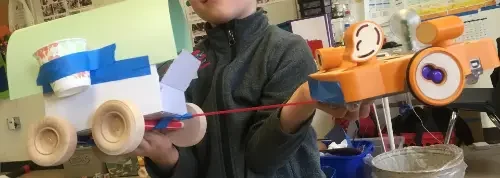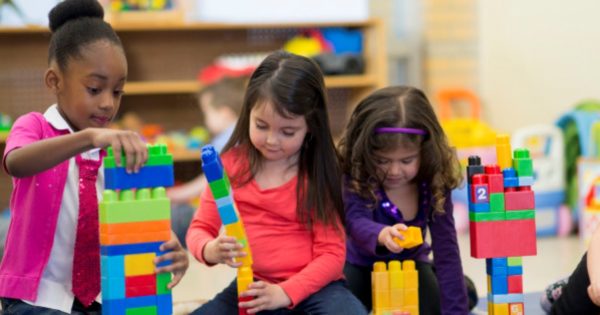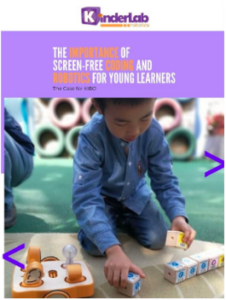Innovative Ways To Integrate Coding and STEAM with Robotics Curriculum for Elementary Students
“Children are like wet cement. Whatever falls on them makes an impression.” Those are the words of the late Dr. Haim Ginott, who was a school teacher, a child psychologist and psychotherapist, and a parent educator.
There is an increased emphasis on the development of children’s computational thinking as a foundation for learning advanced programming and 21st Century Learning skills. Young children learn best when learning is made fun, interactive, and active. And bringing in coding and robotics curriculum for elementary classrooms foster that learning, by developing critical thinking skills — comprising a vast set of problem-solving and analytical capabilities, habits, dispositions and approaches often required in the field of computer science, programming, and STEAM skills.

So How Does Coding Foster STEAM Learning?
STEAM education prioritizes educating children, in all levels of education, with core academic skills in fields of science, technology, engineering, arts, and mathematics. While these coding robots won’t teach your preschool or elementary school children advanced calculus and engineering mathematics, kids begin to understand STEAM concepts through everyday play. Robotics teaches young learners how to associate sounds with letters, practice counting and basic arithmetic, spell words, recognize patterns, retell stories, match shapes and colors, and bring their lessons to life.
Building toys facilitate learning through construction as kids learn how to pay attention to detail and follow instructions. There are also musical programming toys that take advantage of children’s innate tendencies to develop their understanding of notes through musical challenges. When you introduce coding toys, in particular hands-on, programming robots like KIBO, the screen-STEAM robot toy, young children are able explore STEAM concepts through one single, playful toy.

Ways To Integrate Robotics Curriculum for Elementary Students
Robotic curriculum for elementary learners should provide standards-aligned, step-by-step instruction to introduce coding and programming within any subject – reading, writing, geography, math, science – while developing the child’s computational skills. And play! Interactive robotics take advantage of the power of play when integrated into the early childhood education curricula. According to ASCD.org, play is an ever-changing dynamic process that’s imaginative, multisensory, creative, and interactive, stimulating the whole brain all at once compared to formal academic activities.
Take a look at some of the creative ways coding and robotics bring playful STEAM learning when integrated in early childhood education:
1. Science: In the field of life and physical sciences, programming toys teach young kids to apply basic scientific skills while playing through the observation of structure, patterns, and behavior, and experimentation. In this example, you can see how robots bring life science to life, which describes a Windy Day earth science lesson, as well as life science lesson on helping animals survive through winter.
2. Technology: Coding robots allow for the practical application of scientific knowledge where kids put together a series of commands and instructions to guide the robot’s movements and actions in a fun way. In this lesson, children go through a step by step coding process through the retelling of the Very Hungry Caterpillar.
3. Engineering: Even preschool-aged children can use scientific principles to design and build, especially in creative settings like a makerspace, where kids have the ability to create amazing things. They are the innovators coming up with inventive ways to develop the “personality” of the coding robot. Or just have fun building a bowling lane and play KIBO Bowling!
4. Arts: Kids can be artistic geniuses with robots that incorporate art platforms that they can transform. Kids can design their own look and feel, and tell a story through coding play…see this migrating gray whale!
5. Mathematics: Using robots can teach arithmetic, computational, and logical skills and reasoning to young kids developing their math skills. Robotics and math go hand in hand with number line lessons, pattern recognition, shapes, and more!
Do not train children to learn by force and harshness, but direct them to it by what amuses their minds…” Early childhood educators are already stretched thin with routine academics and the thought of adding programming classes could feel like excess. However, using ready-to-use robotics curriculum for elementary students offer an easy way to integrate coding and robotics into early childhood so that learning can be fun, and children can grasp STEAM concepts with ease.
More About KIBO
KIBO, the learning robot designed specifically for early learners from Prek through 5th grade, offers an inviting, engaging platform for young children to start their journey into creating with code in a fun and creative way. KIBO’s block-based coding language gives children control over the robot’s movements, sounds, and sensors, allowing them to express their imaginations with code. The KIBO robotics curriculum for elementary students teaches these young children to tell stories, create characters, and explore the world around them through code. KIBO is the number one choice in screen-free coding for kids – trusted by more parents and schools to introduce today’s youth to the wonders of technology and robotics.
Learn more about why KIBO is so different – and so important – for your young learners, as it is designed to be extended with craft and other building materials, providing a platform for imaginative play, where children develop their computational thinking, and the engineering design process.
KIBO pulls together constructive play, problem solving, critical thinking, hands-on learning, and more!
Learn the 6 Key Benefits of Using Robotics with Your Youngest Students!
![]() Introduce coding and robotics into your early childhood classrooms – in a fun and playful way!
Introduce coding and robotics into your early childhood classrooms – in a fun and playful way!



















